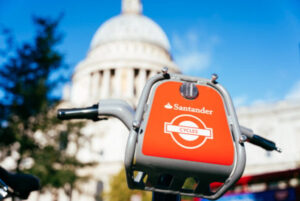The Mayor of London, Sadiq Khan, has revealed that more than 260,000 children are breathing cleaner air as a result of the capital’s growing network of School Streets.
Following the agreement of a funding deal for TfL to secure the transport network’s future, £69m per year will now go to boroughs to help them deliver even more School Streets. In the past five years, 373 school streets have been funded by City Hall and TfL, with the rest funded by the London boroughs.
School Streets restrict car access to streets outside a school at drop off and pick up times, making it safer, cleaner and easier for children to get to school on foot, by bike or by scooter. First introduced in Camden in 2017, there are now 547 across nearly every London borough with a quarter of primary schools now located on School Streets.
Despite the Mayor’s interventions meaning progress has been made, 97 per cent of schools and colleges in outer London still exceed revised air quality targets set by the World Health Organization, [2]. In around 75 per cent of these areas in outer London, air pollution remains so high that it exceeds even lower air quality targets set in 2005.
That is why the Mayor is also calling on the Government to set much more ambitious air quality targets under the Environment Act ahead of the deadline on 31 October. Sadiq is now urging ministers to work with him as he redoubles his efforts to protect Londoners from the lethal consequences of pollution and the environmental damage caused by fuel emissions, said the Mayor’s office.
Toxic air caused by traffic can lead to children growing up with stunted lungs and adults suffering from illnesses such as asthma, lung disease and dementia. Thousands of Londoners a year die prematurely because of long term exposure to air pollution – with the majority of deaths in London’s outer boroughs. This is why the Mayor is consulting to expand the Ultra-low Emission Zone London-wide, which could significant improve air quality for a further 5 million Londoners.
Mr Khan, said: “School Streets are a key tool in helping to reduce air pollution around schools. They have made a massive difference to the way our children travel and there are now more children than ever in London benefiting from cleaner air, less congestion and safer roads.
“Despite progress being made, air quality around schools in outer London is still unacceptably poor which is why I have consulted to expand the Ultra-Low Emission Zone London-wide – to help save lives and build a better, greener and cleaner London for everyone.
“Even so, I can’t do it alone. The Government must stop disregarding the dangers of air pollution and act now to introduce bolder air quality targets under the Environment Act, to protect the next generation from the scourge of toxic air.”
Penny Rees, TfL’s Head of Healthy Streets Investment, said: “Enabling parents and children to walk, cycle or scoot to and from school has so many benefits and is a vital part of making our capital safer, healthier and more sustainable. We’re delighted to see the School Streets network continue to grow, improving air quality across our capital. We’ll continue to work closely with schools, local communities and boroughs as we deliver further schemes across London so that all children can breathe cleaner air on their journey to and from school.”
Enfield Council’s Cabinet Member for Environment, Cllr Rick Jewell, said: “We are committed to improving air quality across our borough and are working with the Mayor of London and other partners to identify and introduce initiatives to reduce and prevent pollution and improve the health and wellbeing of our communities.
“School Streets have proven to be one of the most effective and popular ways of improving air pollution and encouraging school children to walk, cycle or scoot to school and we are committed to rolling out many more of these schemes in the months and years to come.”






















